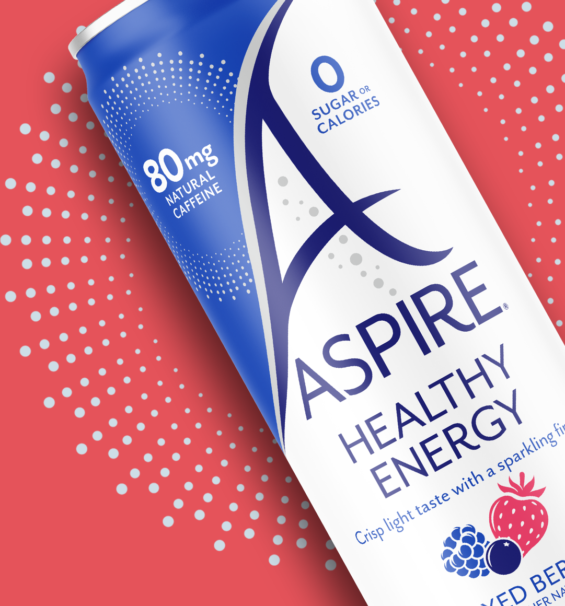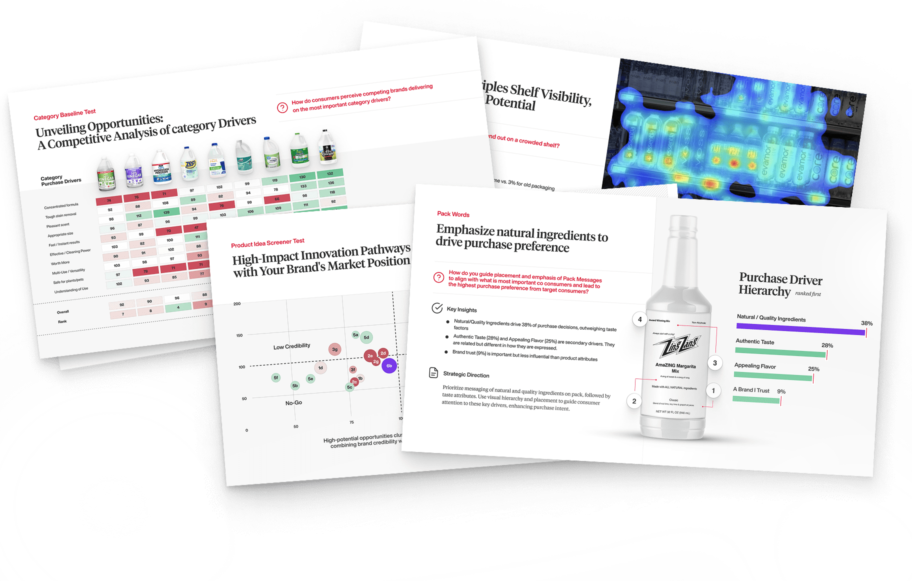Your product may be incredible, innovative, and consumer-centric, but it might as well be invisible if your e-commerce assets don’t immediately capture and hold attention in those critical first few seconds. Online shoppers move fast. They skim, compare, and click away without hesitation. A single image or well-crafted product description can single-handedly make or break a sale; your digital assets are not just details but revenue drivers.
But here’s the challenge: Unlike fixed assets like inventory or equipment, intangible assets like product images, design elements, and descriptions require strategic and often tested development. It’s not enough to upload a few photos and hope for the best. Your digital asset management strategy and design assets must increase visibility, engage consumers, and drive conversions.
In this guide, we’re breaking down everything you need to know about ecommerce assets—what they are, why they matter, and how to optimize them for maximum impact. By the end, you’ll have a clear roadmap for better ecommerce asset management, ensuring that every digital asset you deploy moves the needle on sales.
Ecommerce assets and their impact.
At the heart of a thriving ecommerce business are its brand assets—the visual and textual elements that convey your brand’s identity and value proposition. This includes everything from product photos, videos, graphics, and visual cues to detailed product information, engaging descriptions, trust signals, and CTA’s. Effective design assets ensure a seamless and enjoyable user experience, guiding customers from browsing to purchasing effortlessly.
Impact on brand perception, search visibility, and conversion rates.
The quality and consistency of your digital assets directly affect how customers perceive your brand. High-resolution images, informative descriptions, and intuitive navigation build trust and credibility, encouraging customers to engage with your products.
Optimized product information enhances your site’s search engine ranking, making it easier for potential customers to find your offerings. But that’s not enough to win them over. Having a well-structured ecommerce site with cohesive brand assets is how you create buy-in with visitors, eventually converting them into loyal customers.
Recent data underscores the critical role of robust ecommerce assets in driving revenue growth. In 2024, U.S. ecommerce sales reached $1.192 trillion, doubling from $571.088 billion in 2019. This surge highlights the increasing reliance on digital platforms for shopping. Whether you are DTC or retail first, this data shows that your ecommerce strategy cannot fall short.
For small businesses, investing in high-quality media assets and effective digital asset management systems can level the playing field, allowing them to compete with larger enterprises. By prioritizing developing and optimizing your ecommerce assets, you position your brand to capitalize on the growing digital marketplace, enhancing visibility and profitability.
The core elements of high-performing e-commerce assets.
Your ecommerce assets are more than just visuals—they’re the key to grabbing attention, building trust, and driving conversions. Customers don’t get to hold, touch, or try products before buying online. Your digital assets sell everything, including images, videos, and descriptions. If they are weak, your sales will be too.
Visual assets that sell.
Customers process images 60,000 times faster than text, making substantial media assets non-negotiable. Every small business and global brand needs compelling visuals to make products stand out and convert browsers into buyers. Here’s how to get it right.
Shoppers rely on images to make decisions, so low-quality visuals kill sales. A strong ecommerce product image strategy includes:
Hero Shots – Clean, high-resolution photos that immediately showcase the product in its best light.
Alternate Angles – Provide multiple views, including side, back, top, and bottom angles. Giving customers a virtual 360° look builds trust and reduces hesitation..
Packaging Close-Ups – Highlight intricate details of your box packaging design ideas. Show textures, finishes (like embossing or foil), seals, and safety features.
Scale & Context Shots – Help customers understand size by placing products next to familiar objects or holding them in hand. This is crucial for reducing returns driven by size misperception.
Lifestyle Photography – Show the product being used in real-life settings. Whether it’s a supplement on a kitchen counter or a skincare product mid-routine, these shots evoke emotion and spark desire.
Infographics – These combine clean visuals and bite-sized data to educate quickly. They can explain benefits, ingredients, or product comparisons while staying visually on-brand.
Exploded Views – Display each component separately for technical or multi-part products to communicate value and clarity.
Instructional Visuals – Step-by-step usage shots that eliminate confusion and encourage purchase, especially for beauty, health, or kitchen products.
Supply Chain Transparency Visuals – Images showing your ethical sourcing, clean manufacturing environments, or sustainability efforts. These build trust and appeal to the growing demographic of conscious consumers.
Social Proof Visuals – UGC, reviews with images, and influencer content. Seeing real people use and love your product acts as a powerful validator.
For complex product information, Infographics simplify consumers’ understanding, breaking down features and benefits in an easy-to-digest way. On the other hand, lifestyle images create an emotional connection by showing products in real-world use.
For example, a coffee brand might use 3D assets of its packaging alongside a lifestyle shot of someone enjoying their morning cup. This combination builds aspiration and trust—two essential factors in digital sales.
Conversion-optimized product pages.
Your product page isn’t just a listing—it’s your ecommerce platform’s most valuable marketing asset. Every element, from the title to the visuals, plays a role in turning visitors into buyers. Nail these details, and your conversions soar. Miss them, and potential customers bounce.
An excellent product title works for both people and search engines. It must be clear, keyword-rich, and compelling—not stuffed with jargon. It should align with your brand voice and, more importantly, consumer interest. That’s how you blend digital marketing with real customer appeal.
Besides titles, product descriptions do the heavy lifting. Don’t just list features; sell the experience. Weave keywords naturally while showing how the product improves the customer’s life. A strong media asset like a lifestyle image or a modern packaging design mockup can enhance engagement, making the product feel tangible.
One thing to remember! Shoppers skim. Bullet points make your case fast. But most brands waste them on dry specs. Instead, turn features into benefits.
Shoppers skim. Bullet points make your case fast. But most brands waste them on dry specs. Instead, turn features into benefits.
Data-backed UX and platform optimization.
Every detail, from page load speed to marketplace consistency, directly affects customer experience and sales. Brands that leverage product data and behavioral insights can fine-tune their platforms for seamless navigation, higher conversions, and greater brand trust.
A product listed on Amazon, Walmart, or a direct-to-consumer site should look and feel the same. Disjointed branding, mismatched product data, or inconsistent descriptions erode trust. Channel agnostic customers expect uniformity in messaging, pricing, and marketing assets, regardless of where they shop. Aligning visual assets, product titles, and key details across all platforms strengthens brand perception and improves marketplace rankings.
A smart marketing team adapts its strategy to meet each platform’s requirements without sacrificing brand identity.
The science behind high-performing ecommerce assets.
Every e-commerce business competes for attention, but winning brands understand the science behind consumer decision-making. High-performing branding assets don’t just look good—they’re backed by data, refined through testing, and designed to align with customer behavior at every touchpoint. From psychology-driven visuals to Google Analytics insights, optimizing assets is an art and a science.
Consumer psychology in ecommerce.
Consumers don’t always make rational buying decisions—emotion, perception, and habit play a significant role. Valuable assets like imagery, product descriptions, and design elements must work together to guide potential customers toward a purchase.
- Visual Hierarchy – Hero images, contrasting colors, and strategic whitespace help direct attention.
- Emotional Triggers – Words like “exclusive,” “limited,” and “best-selling” create urgency and reinforce brand stickiness.
- Cognitive Ease – Simple, easy-to-read descriptions improve comprehension, while cluttered layouts distract people.
Understanding how these factors influence customer behavior allows brands to optimize marketing efforts for maximum impact.
Testing & iteration strategies.
No ecommerce asset should be static. A/B testing, analytics, and feedback loops help refine brand awareness strategies and ensure that assets perform at their highest level.
- A/B Testing – Running controlled experiments on product titles, descriptions, and imagery reveals what resonates best with shoppers.
- Heatmaps & Click Tracking – Tools like Google Analytics and session recordings show where users engage (or drop off).
- Customer Feedback – Reviews, surveys, and email marketing responses highlight what’s working and what needs improvement.
SmashBrand’s performance testing suite simplifies this process. By combining real-world consumer insights with iterative design adjustments, brands can ensure that every asset—from intellectual property like taglines to product packaging—is optimized to convert.
Avoiding common pitfalls.
Even well-known brands make costly mistakes with their marketing efforts. Some of the biggest pitfalls include the following:
- Inconsistent Branding – Mixed messaging across platforms weakens brand awareness and confuses buyers.
- Ignoring Data – Gut instinct isn’t enough. Brands that fail to track inventory management trends or ignore analytics miss optimization opportunities.
By leveraging optimized visuals and continuous testing, brands can eliminate these issues and refine their strategy for long-term success.
Building a future-proof ecommerce asset strategy.
E-commerce constantly evolves, and brands that fail to adapt risk losing relevance. A strong ecommerce assets strategy focuses on what works today and ensures long-term success. That means staying ahead of algorithm shifts, leveraging emerging technology, and tracking the right metrics to refine marketing channels and maximize cash flow.
Keeping up with algorithm changes & platform updates.
Marketplaces are constantly changing, impacting how customer engagement and visibility are measured. Whether it’s Google, Amazon, or social commerce platforms, updates can shift ranking factors overnight. Brands that proactively adjust their brand identity, SEO strategy, and marketing channels stay ahead of competitors.
Key tactics include:
- Optimizing for intent-based search – Understanding what customers look for helps assets rank higher.
- Updating product listings regularly – Stale content drops in search rankings. Refreshing product label design, descriptions, and packaging keeps listings relevant.
- Adapting to new platform features – Platforms like Amazon and Shopify roll out enhanced ad placements, brand activation toolkits, and customization options that can boost visibility.
By monitoring these changes, brands can future-proof their digital presence and avoid sudden drops in performance.
Leveraging AI & automation for optimization.
AI and automation are transforming how brands manage ecommerce assets. From real-time customer engagement tracking to AI-powered packaging design recommendations, technology streamlines how businesses optimize their assets.
Key benefits include:
- Smarter personalization – AI analyzes behavior patterns to tailor messaging, visuals, and promotions.
- Automated asset management – AI-driven tools ensure physical assets like product images and descriptions are always up to date.
- Predictive analytics – By analyzing data trends, brands can forecast demand, optimize pricing, and improve cash flow.
Integrating AI improves asset performance and reduces manual workload, allowing teams to focus on high-level strategy.
Measuring success through KPIs.
A high-performing ecommerce strategy relies on data. Tracking the proper metrics ensures that assets are working as intended and identifies areas for improvement.
Essential KPIs include:
- Conversion Rate – This tells you how effectively your product pages turn browsers into buyers.
- Customer Lifetime Value (CLV)—This metric goes beyond the first purchase, helping you measure the long-term revenue generated by each customer.
- Engagement Metrics – These include click-through rates, scroll depth, bounce rate, and time on page.
- Add-to-Cart Rate – If users add products to their cart but do not check out, it’s a cue to reevaluate your visual assets, pricing strategy, or checkout experience.
- Cart Abandonment Rate – High abandonment rates may signal friction in the path to purchase..
- Return Rate – Frequent returns could mean your product information, visuals, or descriptions are misleading.
- Revenue per Visitor (RPV) – It’s a powerful way to evaluate how well your digital assets and upselling strategies convert traffic into value.
- Upsell & Cross-Sell Performance – How often are users buying more than just the initial product? Smart asset placement can significantly increase average order value.
- Email Marketing Metrics, such as Open rates, click-throughs, and conversions from email flows, can indicate how well your content and design perform across marketing channels.
- Product Reviews & Ratings – Beyond star counts, analyze review content. Are users mentioning quality, usability, or design?
- Return on Ad Spend (ROAS) – For paid traffic, ROAS shows the efficiency of your digital marketing campaigns. It helps tie asset quality directly to bottom-line results.
Regularly refining assets based on performance data ensures continuous growth. Brands that track, test, and optimize will always have an edge in the market.
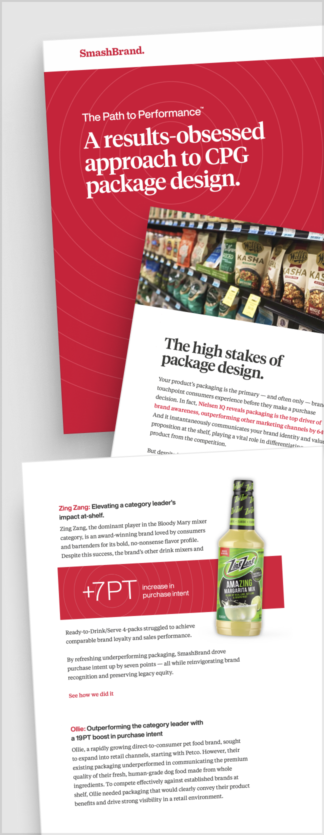
Path to Performance™
Taking a results-obsessed approach to CPG package design.
Learn how SmashBrand’s proprietary process – rooted in scientific principles, informed by data, and validated by your target audience – takes the guesswork out of package design and delivers guaranteed results.
Turning strategy into action.
Solid ecommerce assets are a necessity. Every element, from product packaging design to optimized product pages, influences how consumers perceive a brand, engage with listings, and ultimately make purchase decisions. Brands that invest in high-quality assets see more substantial conversions, better rankings, and long-term growth.
Now is the time to take action. Conduct an audit of your existing assets. Are your product pages delivering the perfect package of information, visuals, and persuasive copy? Do your images align with current packaging design trends, or are they outdated? Is your online package design consistent across all platforms? Identifying these gaps is the first step toward optimizing performance.
If refining your e-commerce assets feels overwhelming, expert guidance can make all the difference. A data-driven, consumer-first approach ensures low-risk, high-reward results, helping brands create assets that look great and convert. Whether a modern refresh or a vintage package design that sets your product apart, strategic execution is key to standing out in an ever-evolving digital marketplace.
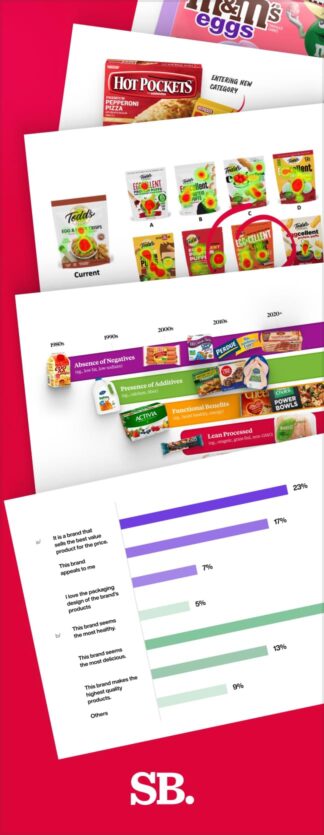
Nice Package
Don’t miss out on our monthly newsletter Nice Package!
Each month, we deliver a data-driven newsletter directly to your inbox, unpacking a critical topic in the FMCG & CPG industry.
"*" indicates required fields
Key takeaways to enhance your strategy.
E-Commerce Assets Drive Performance – High-quality ecommerce assets are essential for visibility, engagement, and conversions. Brands that optimize their assets see stronger sales, improved rankings, and greater customer trust.
Visuals, Copy, and UX Influence Buying Behavior – Product packaging design, compelling descriptions, and seamless user experiences all shape customer engagement and impact purchasing decisions.
Data-Backed Optimization is Key – A/B testing, Google Analytics, and consumer insights help brands refine assets for better performance, ensuring every element— from online package design to page layout—works effectively.
Consistency Across Marketplaces Matters – Aligning branding, marketing channels, and product label design across Amazon, Walmart, and DTC platforms strengthens credibility and drives conversions.
Subscribe to
Nice Package.
A monthly newsletter that unpacks a critical topic in the FMCG & CPG industry.
Free Resource.
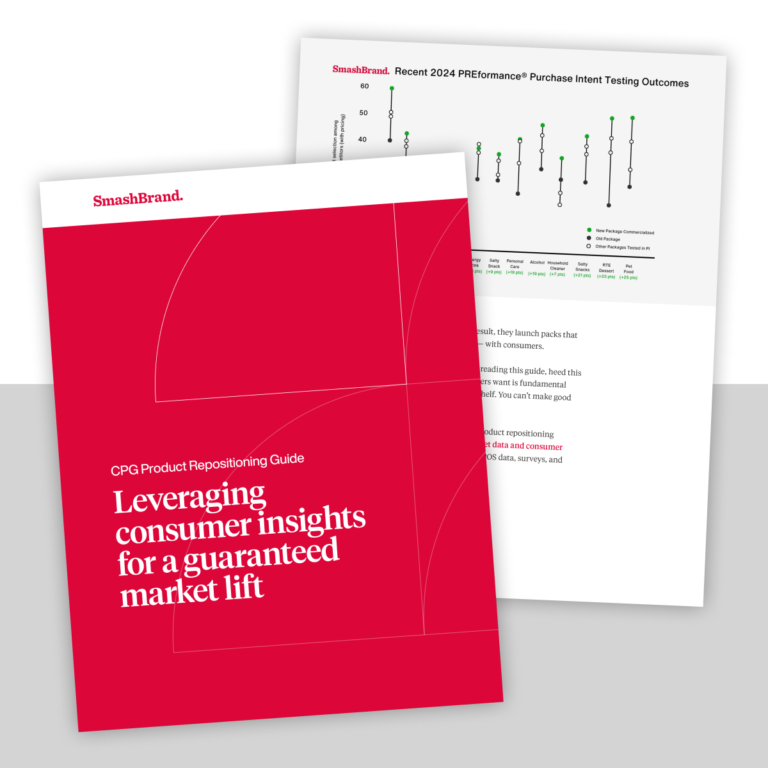
CPG product repositioning guide.
Explore the five undeniable signs your CPG product needs repositioning along with strategies for leveraging consumer insights for a guaranteed market lift.
Learn More About CPG product repositioning guide.
